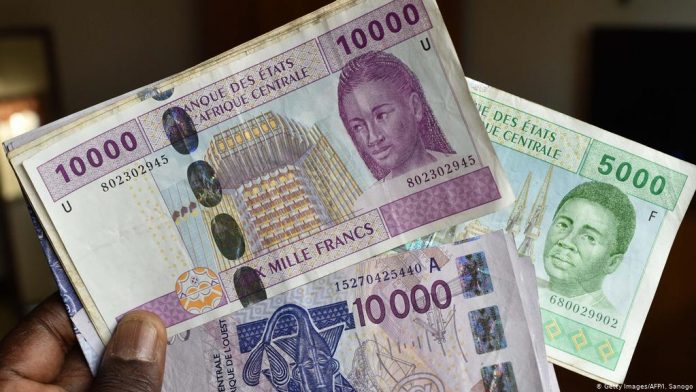It is necessary to finance commercial activities to ensure their revival, underlines a report. Which points out that only 40% of business activities in Africa are financed through banks.
Afreximbank and ADB (African Development Bank) publish the third part of the Trade Finance in Africa research series. The report points to the characteristics of trade finance in Africa over the past decade. It highlights a certain relaxation of the banks in this type of financing, while new constraints appear.
The authors compare the attitude of banks to trade weight in the global or African economy. Between 2011 and 2019, Africa’s trade finance gap is around $91 billion.
This deficit had narrowed slowly but steadily, falling to $70 billion at the end of 2016, before widening since then to $82 billion. This is an estimated 5.5% of the global trade finance gap. As we know, total African trade represents only 3% of world trade.
For the period 2011-201919, the average size of trade finance provided by banks in Africa stands at $417 billion. With total African trade for the same period averaging $1.077 billion, banks financed an average of 40% of Africa’s trade. In comparison, 80% of world trade is financed by banks, suggesting that African trade is significantly underserved by these financial institutions.
Slowly, the contribution of banks to trade finance has declined, from a peak of 17% in 2011 and 2012 to 10% in 2018-2019. Between 2014 and 2019, trade finance revenues declined for all banks except national public institutions.
“This could be the result of high fees from captive clients of public banks,” comment the authors. In fact, over the same period, the average letter of credit opening commission charged by public banks was three times that charged by private banks.
Profitable but neglected SMEs!
Over the period, intra-African trade accounted for around 17% of total finance, a share equivalent to what it represents in African trade. This leads the authors to conclude that intra-African trade has received “its fair share” of funding.
Competition, new KYC banking regulations, anti-money laundering and stringent capital requirements introduced after the global financial crises have increased case costs and reduced margins. This has made small transactions, especially for SMEs, unprofitable for banks.
However, the default rates of SMEs in the sector have fallen sharply. The share of SME trade finance applications rejected by banks increased from 20% in 2013 to 40% in 2019. Today, the fear is that the Covid-19 pandemic will further worsen the rejection rate of trade finance demands of SMEs and derail progress.
Default rates on trade-related transactions in Africa have historically been lower than those on global bank loans. In 2017-2019, the average default rate was 7.5% on trade finance facilities, compared to 11% for overall average non-performing loans for the same period.
Highlight: So the data shows that compliance with strict international regulations affects access to trade finance for businesses in Africa. Among the new constraints, banks cite the KYC (Know Your Customer) and AML (Anti-Money Laundering) procedures for combating fraud and money laundering.
In the interest of development institutions!
From 2015 to 2019, 16% of banks surveyed indicated that KYC compliance was the third most important reason for rejecting trade finance applications.
This finding is consistent with “the findings of a recent survey that identified KYC as the primary factor influencing the volume of rejection rate.” As regulatory requirements related to KYC-AML have become more stringent, banks have also become more selective, moving away from clients who present significant risks for less compensation.
For their part, Development Finance Institutions (DFIs) are playing a more active role in supporting trade finance intermediation in Africa. In 2015-2019, on average 60% of banks that engaged in trade finance activities received some form of support from DFIs.
But the distribution is far from uniform. Support for DFIs is concentrated between banks based in West and Southern Africa and foreign private banks across the continent. Citibank, Commerzbank, Deutsche Bank, Standard Chartered Bank and UBAF (Union of Arab and French Banks) remain at the top of the list of correspondent banks serving issuing banks in Africa. These relationships have declined in recent times.
Meeting these challenges, the authors conclude, will require a concerted effort among the various players in the sector, including, but not limited to, multilateral organizations, international and national regulators, and commercial banks.
A good place to start is to raise awareness of the challenges that the new KYC-AML requirements have placed on banks in the trade finance sector. Economies are moving to implement new Basel III regulations and strict anti-money laundering measures.
At the same time, “banks have had to reserve more venture capital for foreign transactions, including trade finance assets, and invest more in verifying new clients.”
On the good news side, many trade support facilities continue to dedicate resources to SME trade. As pro domo advocacy, the authors cite the AfDB’s trade finance support program, as well as AfTRAF’s Afreximbank program.
Not to mention the IFC’s Global Trade Liquidity Program. Despite these facilities, “a more flexible approach to supporting SMEs is still needed if approval rates are to increase.”
Admittedly, the DFIs are partly taking over, but they must also support public banks, which are sometimes excluded from financing programs for trade facilities.
In addition, DFIs could expand the coverage of SME trade finance requests through risk participation and guarantee programs with commercial banks for SME trade finance requests.
More needs to be done to increase support for local banks that are also involved in trade finance in Africa. In the years to come, Africa’s trade will face new challenges and opportunities.
The introduction of AfCFTA (African Continental Free Trade Area) is expected to remove significant barriers to intra-African trade and create a large market for businesses in the region.
New emergencies!
At the same time, the current global health crisis caused by Covid-19 is impacting the region’s global supply chains and trade with the rest of the world, while limiting the availability of dollar liquidity to support trade. .
Thus, once the crisis has subsided, the need for financing to revive the region’s trade will be greater and more urgent. “Concrete and urgent steps to reduce Africa’s trade finance gap and address the challenges facing the industry will be equally important.”
“We hope that the findings of this report will motivate policymakers and industry experts to develop and implement strategies to make business finance more accessible to African operators, including SMEs in fragile states and low-income countries,” comments Stefan Nalletamby, Director of the AfDB’s Financial Sector Development Department.































